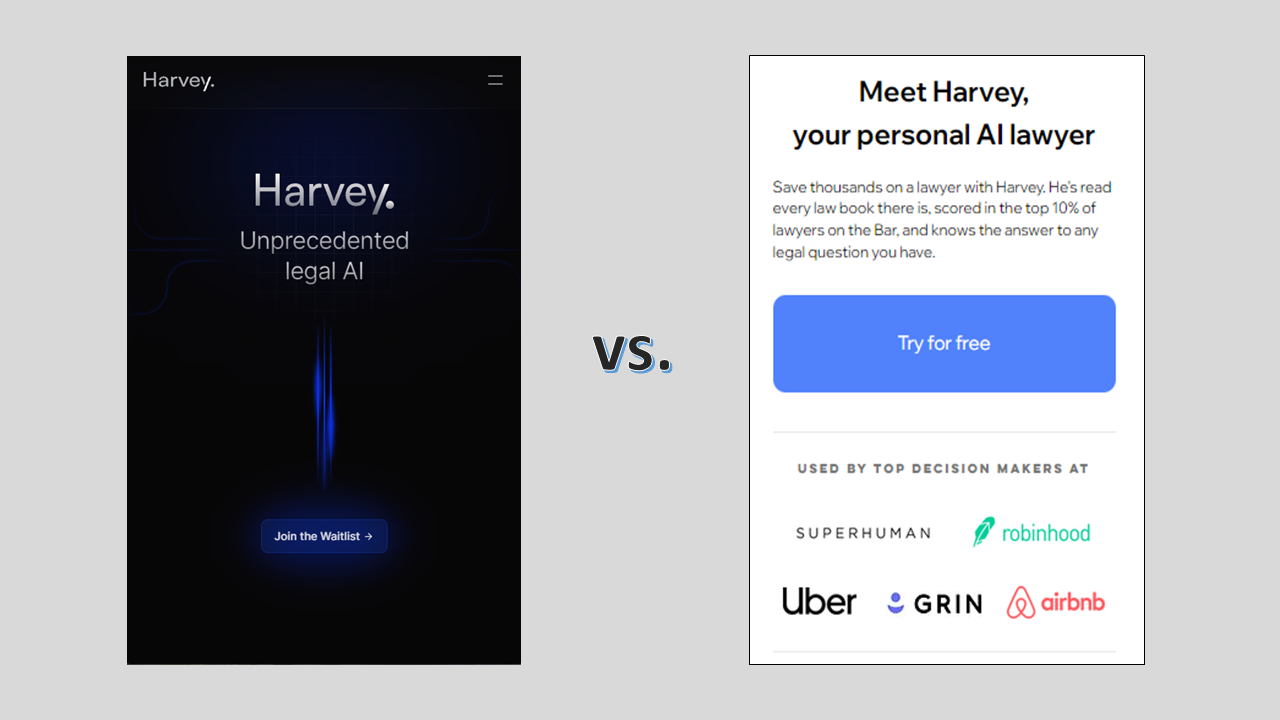
Harvey: Complete Buyer's Guide
Next-generation legal AI
Harvey represents the next generation of legal AI, positioning generative artificial intelligence at the center of due diligence workflows rather than relying solely on traditional extraction-based systems. Founded in 2022 with backing from Sequoia, OpenAI Fund, and Kleiner Perkins, Harvey targets enterprise law firms and corporate legal departments with AI capabilities that extend beyond document analysis into litigation support and regulatory monitoring[46].
Market Position & Maturity
Market Standing
Harvey has established significant market presence since its 2022 founding, achieving adoption by 335+ customers across 45 countries and 64% of Am Law 100 firms[46][49].
Company Maturity
Founded in 2022 with backing from Sequoia, OpenAI Fund, and Kleiner Perkins, Harvey demonstrates strong investor confidence and rapid market penetration[46].
Growth Trajectory
Rapid customer acquisition and high-profile client wins including global firms like Ashurst and Allen & Overy indicate strong market validation[54].
Industry Recognition
Adoption by leading global law firms across multiple practice areas, with documented success in M&A due diligence, contract analysis, and litigation support[46][49].
Strategic Partnerships
The 2025 LexisNexis alliance integrating Protégé™ capabilities positions Harvey within the broader legal information ecosystem[43].
Longevity Assessment
Strong customer retention, documented ROI outcomes, and continuous product innovation through partnerships and technical advancement provide confidence in continued operation.
Proof of Capabilities
Customer Evidence
Allen & Overy achieved 70% research acceleration while processing over 40,000 queries[39][54]. Ashurst documented 75% faster due diligence timelines[54]. Carrefour Spain reduced contract review from 7-10 days to hours[53].
Quantified Outcomes
Masin Projects documented $500,000 in annual savings through reduced manual review costs and 35% increased case capacity[50].
Case Study Analysis
KMSC Law reported 8+ hours saved weekly per attorney in M&A due diligence through automated clause comparison and drafting[52].
Market Validation
Market adoption metrics show 335+ customers across 45 countries with 64% penetration among Am Law 100 firms[46][49].
Competitive Wins
LPHS law firm leveraged Harvey's capabilities to respond to RFPs 5 days faster than competitors, directly contributing to new client acquisition[56].
Reference Customers
Notable implementations include Ashurst, Allen & Overy, Dentons, Bridgewater, and LPHS Law Firm[50][54][55][56].
AI Technology
Harvey's AI architecture centers on generative artificial intelligence capabilities that distinguish it from traditional extraction-based legal AI tools. The platform leverages Anthropic's Claude and Google's Gemini models for multilingual document processing[38][47].
Architecture
The Vault feature serves as Harvey's core document processing engine, handling up to 10,000 files per project with advanced summarization and risk flagging capabilities[38][47].
Primary Competitors
Kira Systems, Luminance, eBrevia, Spellbook
Competitive Advantages
Generative AI architecture enables content creation beyond traditional extraction, including deposition questions, contract redlines, and negotiation strategies using firm-specific data[44][48].
Market Positioning
Harvey targets the premium segment with advanced capabilities, while alternatives serve broader market segments with specialized strengths.
Win/Loss Scenarios
Harvey wins when organizations prioritize content generation capabilities, multilingual support, and comprehensive transaction management. Loses when budget constraints limit premium pricing acceptance or when rapid deployment requirements prioritize immediate value over advanced capabilities.
Key Features

Pros & Cons
Use Cases
Integrations
Pricing
Featured In Articles
Comprehensive analysis of AI Due Diligence for Legal/Law Firm AI Tools for Legal/Law Firm AI Tools professionals. Expert evaluation of features, pricing, and implementation.
How We Researched This Guide
About This Guide: This comprehensive analysis is based on extensive competitive intelligence and real-world implementation data from leading AI vendors. StayModern updates this guide quarterly to reflect market developments and vendor performance changes.
57+ verified sources per analysis including official documentation, customer reviews, analyst reports, and industry publications.
- • Vendor documentation & whitepapers
- • Customer testimonials & case studies
- • Third-party analyst assessments
- • Industry benchmarking reports
Standardized assessment framework across 8 key dimensions for objective comparison.
- • Technology capabilities & architecture
- • Market position & customer evidence
- • Implementation experience & support
- • Pricing value & competitive position
Research is refreshed every 90 days to capture market changes and new vendor capabilities.
- • New product releases & features
- • Market positioning changes
- • Customer feedback integration
- • Competitive landscape shifts
Every claim is source-linked with direct citations to original materials for verification.
- • Clickable citation links
- • Original source attribution
- • Date stamps for currency
- • Quality score validation
Analysis follows systematic research protocols with consistent evaluation frameworks.
- • Standardized assessment criteria
- • Multi-source verification process
- • Consistent evaluation methodology
- • Quality assurance protocols
Buyer-focused analysis with transparent methodology and factual accuracy commitment.
- • Objective comparative analysis
- • Transparent research methodology
- • Factual accuracy commitment
- • Continuous quality improvement
Quality Commitment: If you find any inaccuracies in our analysis on this page, please contact us at research@staymodern.ai. We're committed to maintaining the highest standards of research integrity and will investigate and correct any issues promptly.